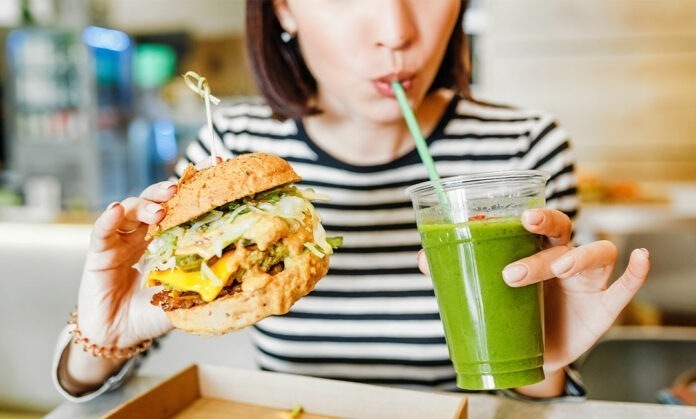When you’re hungry and on the go, fast food can really hit the spot. We get it, it’s cheap, tasty, and convenient. And while it’s ok to indulge in your cravings here and then, if you’re looking to stay relatively healthy, it can’t become a habit. The truth is, it’s extremely challenging to follow a healthy diet while you’re eating fast food on a regular basis. But let’s be clear here – we’re not saying cut fast food out entirely. What we are saying is that there are ways to help you make healthier fast-food choices. Below are some tips and tricks to keep in mind when looking to opt for a quick meal.
1. Grilled vs. Baked
It may seem like an impossible task but try focusing on grilled options. Avoiding fried or breaded items like crispy chicken or breaded fillets. Try choosing turkey, chicken breast, or lean ham. Grilled, skinless chicken is usually your best bet if you’re trying to stay relatively healthy.
2. Portion Control
Keeping an eye on your portion sizes is a super helpful way to still enjoy the fast food but helps keep you from overdoing it. Many fast-food meals deliver enough food for several meals disguised as a “single serving”. Refrain from supersizing or value-sized items and try and aim for the smallest size when looking at burgers, sandwiches, or sides. If you’re really trying to be mindful, check out the kid’s menu – they generally have more reasonable portions.
3. Avoid Sugary Drinks
Soda and other common beverages that accompany many fast-food meals tend to pack a lot of sugar and calories. For example, a large soda (32 ounces) can have as many as 400 calories! Instead of Coke, Pepsi, or Sprite, try opting for sugar-free drinks, like diet soda, unsweetened ices tea, sparkling water, or just plain water.
4. Watch for Hidden Sodium
High sodium intake is a major contributor to cardiovascular disease, so you’re going to want to watch how much of this you consume. Since many fast-food meals are fueled by hidden sodium, it’s important to be mindful of the meals you’re choosing. The American Heart Association recommends no more than 2,300 mg a day. To do achieve this, especially when you’re surrounded by fast-food style meals, is to plan ahead and eat lower sodium meals prior and following that burger.
5. Customize Your Meals
It can be super simple to make a meal healthier by just making a few easy tweaks. Don’t be afraid to special order when you’re eating fast-food to help minimize your intake. For example, ask for the sauce/dressing on the side, or swap your white bun for a multi-grain option. There are lots of small substitutions you can make that can really add up.
6. Look for Whole Grain Options
Whole grains provide you fiber, while is key in helping you maintain a steady blood sugar throughout the day. Opting for whole grain options while splurging on fast-food can help you on your health journey by working on lower your cholesterol and blood pressure. Thankfully, there are whole grain options at lots of chain restaurants, so do some investigating prior to heading out.
7. Avoid High Fats
When we think of fats, we immediately think unhealthy. And while there are those fats that contribute to an unhealthy diet, fats are actually a necessary part of anyone’s diet. But let’s be clear – there is a line, and we want to be careful that we don’t cross it. Ideally, your saturated fat intake should be limited to less than 10% of your total caloric intake. So, while you shouldn’t necessarily avoid fats completely, being aware of what you’re eating and how much is key, particular with fast-food meals.
8. Choose Your Condiments Carefully
Condiments have this sneaky way to adding extra calories and fat that aren’t needed. Whether it be in salad dressings, spreads, sauces or sides, condiments can contribute to a higher caloric meal than originally intended. Try holding the mayo or asking for a package of ketchup you can add yourself so you know exactly how much you’re actually putting on your meal.
9. Include Protein
Protein is the key to keeping you full longer. Ideally, adults should be aiming for 0.8 grams of protein per kilogram of body weight. Luckily, there are fast-food chain options out there that do in fact offer higher protein meals. A general guideline is 15-30g of protein per meal, so make sure you’re checking out the nutritional information prior to choosing your on-the-go meal.
10. Frequency Matters
Remember, the battle of convenience versus nutrition is often portrayed as an either/or choice. But it doesn’t have to be. Enjoying a fast-food meal here and there is totally fine. However, when you’re opting for fast-food over a home-cooked meal every day or more, than you’re going to run into issues. Balance is key, keep that in mind.
Are you on a weight loss journey? Here are some of our favourite smoothie recipes that are perfect for helping you achieve your goals!
The post A Better Way to Eat Fast Food appeared first on FitMinutes.








